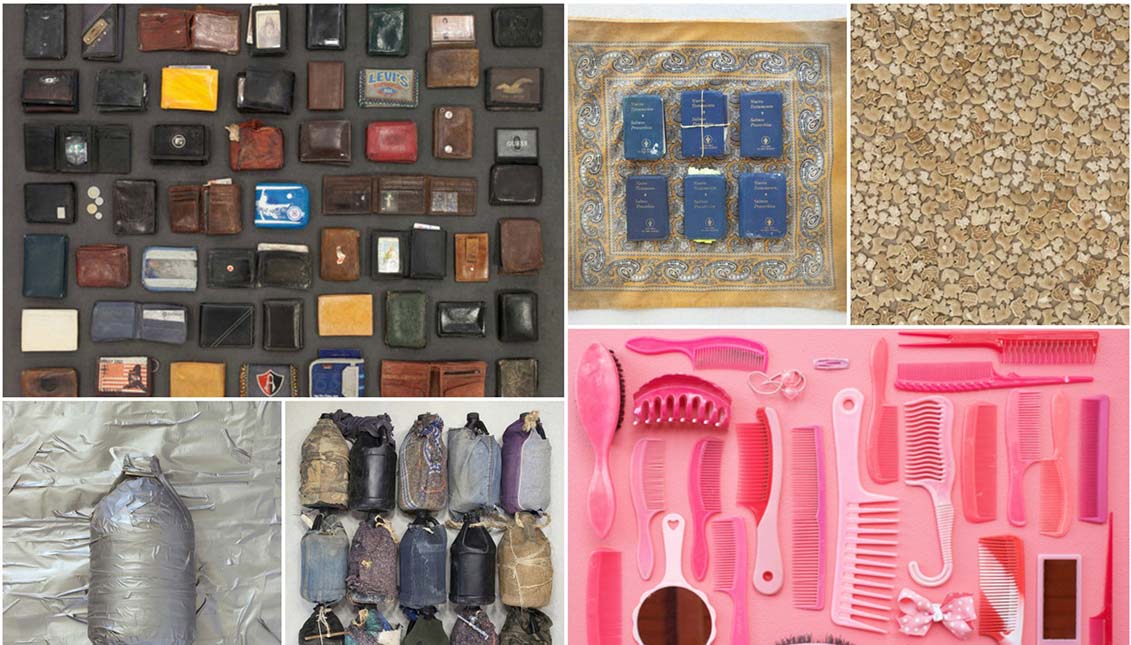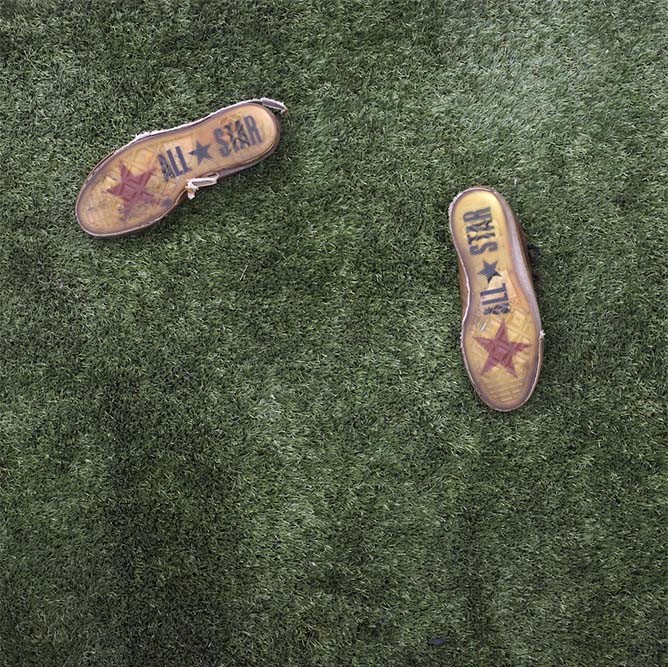
A photographer makes art with objects confiscated from migrants at the U.S.-Mexico border
No, it's not Pop Art, but the colorful trace of a humanitarian drama. Nightmare or American Dream?
How lethal can a toothbrush, rosary or heartburn pills be? Mountains of objects belonging to migrants trying to cross the border into the United States are confiscated every day by ICE agents and thrown into a garbage dump.
The belongings are anonymous traces of their journey through the desert, and depict a humanitarian tragedy that speaks to us of (and cries out for) the value of life in a country where consumerism is our bread-and-butter. Though that's not what we usually say, is it?
Today, an exhibition includes more than a hundred colorful photographs taken of the belongings of these asylum seekers that were thrown into the dump: This is "The American Dream" by artist Tom Kiefer, which can be seen at the Skirball Cultural Center in Los Angeles until March 8.

When Tom Kiefer, 60, moved to Ajo, Arizona, after working as a graphic designer and later as an antique shop owner. His intention was to have a quiet, comfortable life; to buy a house, perhaps travel around the country and take photographs.
"The things that make America, America," he told the LA Times.
But two years later, in 2003, he got a part-time job as a janitor in a U.S. Customs and Border Protection facility to support his creative practice.
At first, he was surprised by the amount of canned food carried by migrants detained at the border; ICE agents took all those cans to charity, he explains, but then gave up. "I witnessed all this food being needlessly thrown out," he recalls.
Tom Kiefer plans to donate these anonymous belongings collected at the border to an institution or university to become a historical document.
He decided to pick them up and, little by little, he felt compelled to do so with other objects: a score of toothbrushes found in the trash, a rosary, a Bible, a wallet, blankets, mobile phones, antidepressants, and even a key ring with a rabbit's foot.
RELATED CONTENT
For six years he accumulated thousands of objects and began to photograph them. His first works, he says, were a pile of water bottles and then an image of brushes and combs on a black background.
Throwing away the belongings “underscores the cruelty of the tentative punishment that the government feels the need to levy against these people,” says Kiefer, adding that most of these asylum seekers "want nothing more than a better life for themselves and their families."

In Tom Kiefer's study, there are stored more than 100,000 objects collected from garbage that he hopes to be able to "classify" one day and that will be added to the "American Dream" project, although he knows that he would need to live at least a hundred years to be able to undertake it.
And this is not a scientific process, as much as the word may mislead. The colorful composition of the photographs, whether big or small format, is full of tenderness and sadness –like how you feel while staring at a love letter addressed to a woman called "Blanca"– and is intended to impress humanity on "things" and give them a kind of sanctity.
“There’s definitely a psychological and emotional weight to all this,” he said. “But because I … saved them from the landfill, I have a personal connection to them.”
"[The photographs are] like a knife in the stomach and it is precisely what gives the work its power, attracts you for its beauty, but then has a very sad background," said the curator of the exhibition, Laura Mart, for whom one of the biggest tragedies is that "we have no way of knowing who these people really are, what happened to them and what they are doing now."

Later on, Tom Kiefer plans to donate these anonymous border belongings to an institution or university to become a historical document of the U.S. government's treatment of those who risk their lives to pursue "The American Dream."











LEAVE A COMMENT: